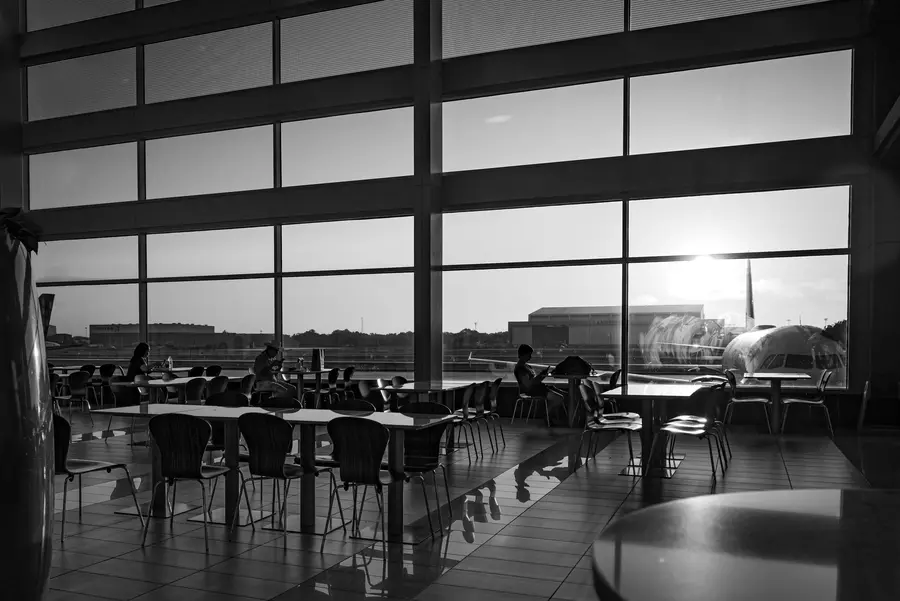Why is Airport Food So Expensive?
If you’ve ever traveled by air, you’ve surely been shocked by the high cost of food at airports. While spending a ton of money on snacks, drinks, and meals is never fun, there is actually a complex reason that you see such high prices near airplane terminals. So, why is airport food so expensive?
Here’s what you’re about to read:
- Learn who is responsible for high food prices
- Understand the complexity of commercial rent at airports
- See other costs associated with food retail
- How you can save costs when traveling

Who Sets the Food Prices at Airport Restaurants?
Before you have a clear understanding of why airport food is so expensive, you need to understand who is in charge of setting prices. Airport restaurants are owned by business owners (both small and enterprise) who lease space from the airport itself. So, it would seem that these companies set the prices.
Under this assumption, it’s easy to chalk up the high prices to supply and demand. If you offer the only coffee, stiff drink, or burger on this side of airport security, you can charge whatever you want for your products. But, the truth is really not that simple.
In fact, many airports have restrictions on product pricing for companies operating under their roof, which is called “street pricing.” This ensures that vendors don’t charge over a certain percentage above what they would for the same products sold outside the airport. Yet, you might still pay $6 for a bottle of water at some terminals.
The reason comes down to business operating costs including rent, commission, and other fees. Therefore, businesses must charge more for their products, including food, in order to generate profit. So, airports themselves are in part responsible for high food prices.
How Do Airports Charge Rent to Vendors?
Airport rent isn’t handled the same way as traditional commercial rent. Rather than applying to operate in a commercial space via a property management company, airport vendors must submit detailed Requests for Proposals (RFPs) that describe their intended use of the property. Then, a designated committee selects vendors based on their business needs and preferences.
After that, the business might receive a proposal from the airport that outlines a lease agreement. These lease agreements usually require a monthly rate plus a commission of sales. For example, commercial space rent at Portland International Airport (PDX) has a minimum annual guarantee of $80 per square foot per year or 10-18% commission on sales, whichever is greater.
According to one commercial real estate report, the average cost of Class A rental space in the Portland, Oregon area is $30.39 per square foot per year. Commercial space rental at airports is more than double, with no cap on the price. So, for a food vendor, rent alone is a significant cost.
What Other Costs Are Associated With Airport Food?
In addition to rent, airport food vendors are required to have food and supplies delivered to airports and past security. This is a much bigger headache for businesses than when they have complete domain over their operating space. Besides the loss of convenience, there can be higher delivery fees.
When a supplier knows that a restaurant, coffee shop, or convenience store operates inside an airport, they see dollar signs. Airports are busy and many people assume that businesses make millions. In many cases, food wholesalers price their products higher for business owners that operate near airport terminals.
Cost-cutting and COVID-19 upended the workforce landscape. Employee turnover rates also majorly impact operational costs for food retail businesses at airports. When a business has to deal with turnover, they must pay more for recruiting, hiring, and training as well. By 2022, high airport turnover rates were addressed by Congress, but employers continue to struggle.
Another significant cost is employee airport parking. Even though most airports have a designated lot for workers to park in, there is still a charge. At the Seattle Airport, for example, an airport food service employee can expect to pay $75 per month to park their car. And, this cost rightfully falls on the shoulders of the business.
How Can You Offset High Food Costs When Traveling?
Fortunately, there are alternatives to help you save on the high cost of airport food. Here are some easy tips we recommend.
First of all, you can drive and park at The Parking Spot to offset the cost of food. We have 37 near airport parking locations serving 22 airports in the US. The amount you would have spent parking at the airport goes back into your pocket so you can actually afford that bottle of water.
Next, you can bring your own food. Liquids are questionable since you can’t take more than three ounces through airport security. But, you are permitted to bring along protein bars, granola, candy, fruits and veggies, and other solid snacks. This is one of the easiest ways to save.
Finally, see if your credit card gets you access to airport lounges. Some of them offer complimentary snacks and water. You can even take your family for a dip in a pool with some airlines at some locations.
Final Thoughts
A perceived monopoly isn’t the only reason for high food prices at airports. High-priced commercial space rent, supplier price-gouging, staff turnover, and employee parking also play a role. So, we recommend you pack dry snacks with you, see if you have access to lounges, and park at The Parking Spot when you travel.
If you want to save even more on parking at select airports in the US, join The Spot Club today. You'll get discounts for all advance reservations and be notified of our seasonal sales!
